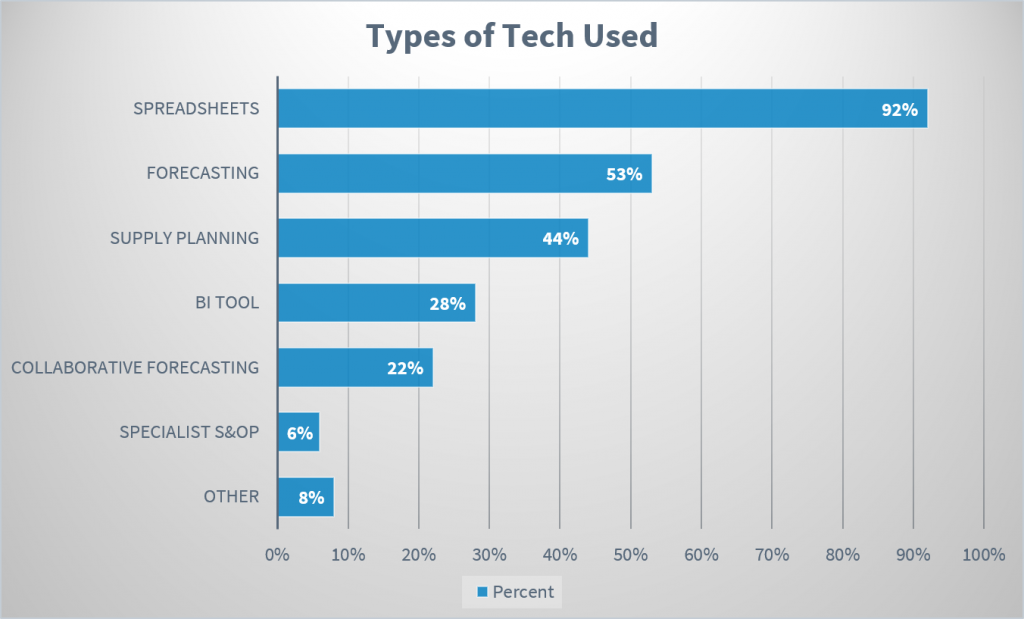According to a recent report from Supply Chain Insights, 92% of companies still use spreadsheets as an integral part of their S&OP toolset. About 29% rely solely on Excel and email to do their demand planning. With the complexity of today’s supply chain, why do companies still use spreadsheets more than anything else?

One answer is legacy. Spreadsheets have been around for a long time. Everyone in the fields is comfortable with them, and many job positions require Excel expertise, which is a widespread skill in the market.
On the other hand, purpose-built S&OP or demand planning software systems are relatively new. Skills in working with these systems is not yet widespread, which puts most of that burden on IT. However, recent advances in technology, such as the configurability of systems like John Galt’s Atlas Supply Chain Planning Software Platform, make the jump from spreadsheets to a central planning tool much easier and cheaper.
So, how do you know it is time to consider a centralized demand planning tool? How do you know your process has outgrown Excel? At John Galt, we have seen many of our customers make this transition. We are intimately familiar with the triggers that drive the change as well as the challenges presented during this move. If you are facing certain issues with your forecasting and demand planning, they may be symptoms that you need a centralized planning tool to take your process to the next level.
As Lora Cecere, puts it, “I am convinced that the complexity of today’s supply chain as a complex system cannot be modeled using an Excel spreadsheet.”
We have recorded a webinar to help you identify when it is time to look at getting rid of spreadsheets and move to a comprehensive S&OP tool. Learn when and why it makes sense for your business to invest in a tool that can enhance and facilitate greater collaboration, enable enterprise integration, and improve process efficiency.
Featured Customer that went from Spreadsheets to Atlas Planning Suite: Organic Valley


